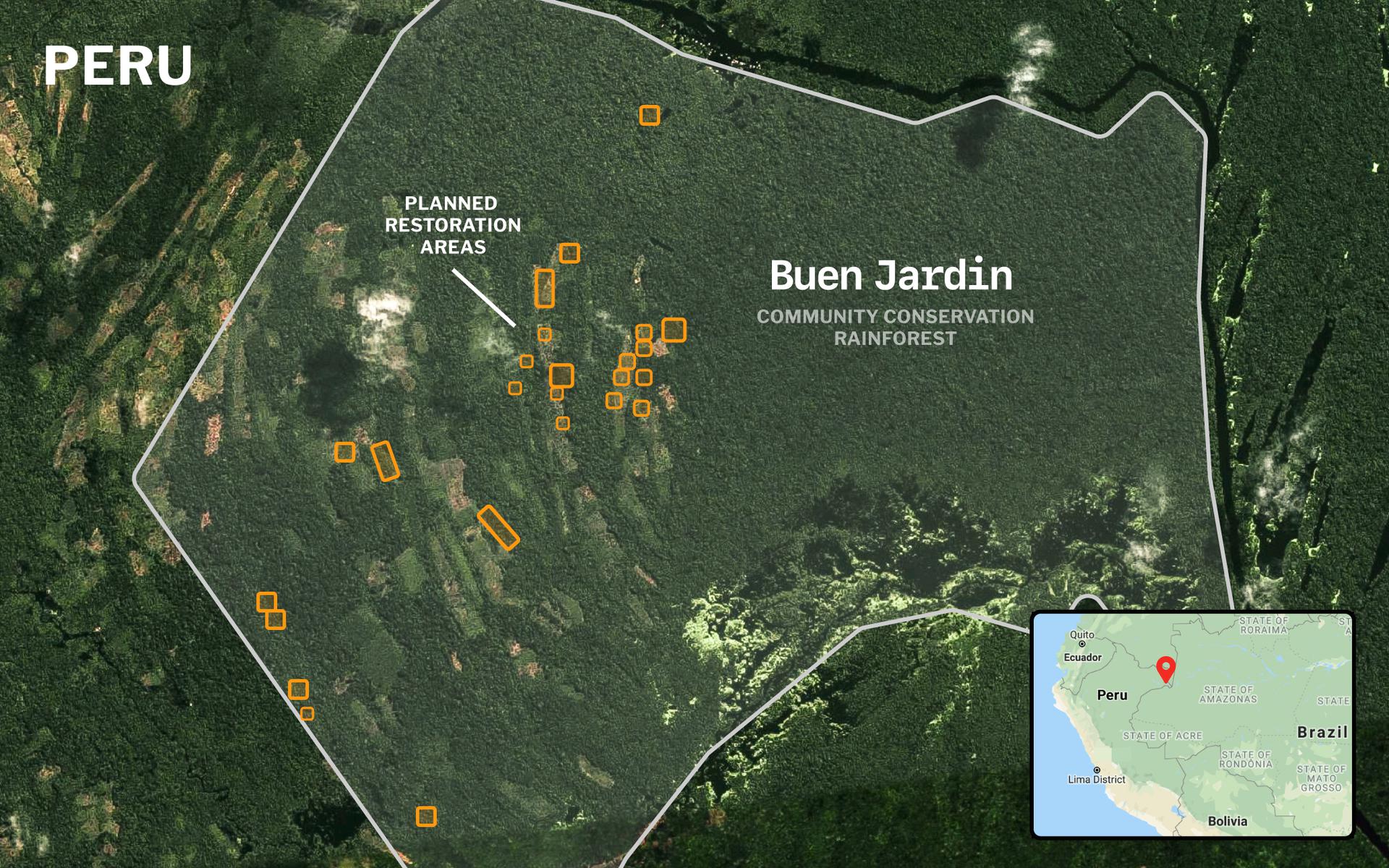Planting Seeds
Over the past two months, the community of Buen Jardin de Callaru has invested the funds contributed by Wren members to begin their tree planting project on degraded land within their community.

As outlined in our previous update, while the Tech-enabled Amazon Rainforest Protection project's main focus is using drone and satellite technology to monitor and prevent deforestation in the Peruvian Amazon, a new branch of the project is working to reforest damaged areas.
Over the past two months, the community of Buen Jardin de Callaru has invested the funds contributed by Wren members to begin their tree planting project on degraded land within their community.
The community’s top priority is to increase the diversity of native trees on their lands while ensuring their children have a sustainable source of food and income from their forest for years to come.

Next, they developed a list of native trees they wished to plant. The trees were selected based on their biological importance along with their medicinal, fruit, and other value.
To plant and care for the trees, the 50 families participating in the project organized voluntary conservation and restoration committees. Conventional reforestation projects sometimes fail to include all community members, like single women or the elderly who do not have the physical ability or time to take on restoration work. However, based on the ancestral tradition of voluntary organization called minga, all community members can participate in the reforestation effort, regardless of whether the particular patch of land being reforested is managed by their family or not. Their aim is to implement the reforestation activities with fewer resources, in less time and in an inclusive manner.

But before trees can be planted, they must be raised as seedlings. To this end, the community built a high wooden platform that will now house the community’s seedling nursery and protect them from flooding. In an effort to increase the diversity of trees for planting, the community developed agreements with neighboring indigenous communities to host trade fairs where they can exchange seedlings that they gather from their forest. They decided to collect seedlings from nearby forests rather than growing them from seeds that they buy from markets far from their community since these native seedlings will have a much higher survival rate.
That's it for this month's update! Feedback or questions? Just reply directly to this email and we'll get back shortly with an answer.

